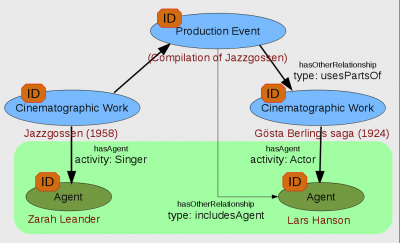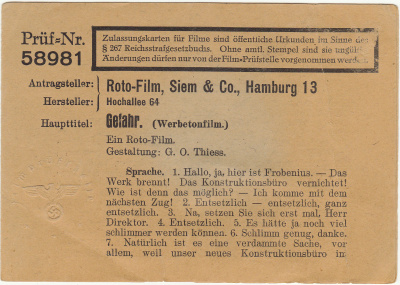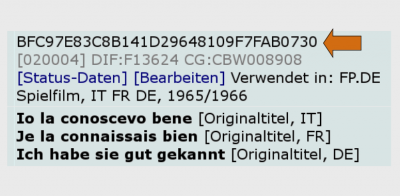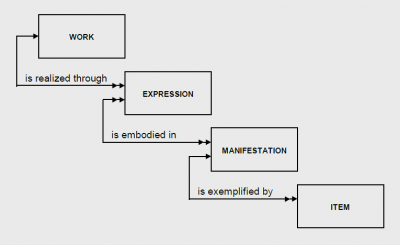Difference between revisions of "No entity without identity"
From filmstandards.org
(Created page with "==Where philosophers can help== Any statement about something must '''identify''' the thing in question. Introducing '''description levels''' into metadata also means introducin...") |
|||
| Line 45: | Line 45: | ||
In the Linked Open Data paradigm, the scope of an identifier is determined by a '''namespace'''. All UniformResource Identifiers (URIs) must contain a component that identifies a namespace. | In the Linked Open Data paradigm, the scope of an identifier is determined by a '''namespace'''. All UniformResource Identifiers (URIs) must contain a component that identifies a namespace. | ||
| + | |} | ||
| + | |||
| + | {| style="float: right; border: 1px solid #BBB; margin: .46em 0 0 .2em;" | ||
| + | |- | ||
| + | | valign="top" width="405px" |[[File:Dif-guid-1.png|400px]]<br /> | ||
| + | <span style="font-size:8pt"> | ||
| + | From the in-house database of Deutsches Filminstitut, Frankfurt am Main | ||
| + | </span> | ||
| + | |||
| + | | valign="top" width="405px" | | ||
| + | This is an identifier from the DIF database which uses '''globally unique identifiers (GUIDs)''' for all instances of all entities. | ||
| + | |||
| + | GUIDs are numbers with 128 binary places (38 decimal places) which are constructed in such a way that the chance of two computers generating the same ID is extremely small, even over long periods of time. | ||
| + | |||
| + | GUIDs are particularly useful in environments where data is created without centralised control. | ||
| + | |} | ||
| + | |||
| + | {| style="float: right; border: 1px solid #BBB; margin: .46em 0 0 .2em;" | ||
| + | |- | ||
| + | | valign="top" width="405px" |[[File:Frbr-model-1.png|400px]]<br /> | ||
| + | <span style="font-size:8pt"> | ||
| + | From: Functional Requirements for Bibliographic Records. IFLA UBCIM Publications – New Series Vol 19. München: K.G. Saur, 1998 | ||
| + | </span> | ||
| + | |||
| + | | valign="top" width="405px" | | ||
| + | Identity (expressed through identifiers) plays a major role in interpreting the FRBR description layers. | ||
| + | |||
| + | Two '''items''' can only '''share an identity''' at the '''manifestation''' level. Likewise, two '''manifestations''' can only share an identical '''expression''', etc. | ||
| + | |||
| + | Levels or '''modes of identity''' have been (and continue to be) a major topic of analytical philosophy. | ||
|} | |} | ||
Revision as of 16:20, 4 April 2011
Where philosophers can help
Any statement about something must identify the thing in question. Introducing description levels into metadata also means introducing different concepts of identity.
 From: Internet Movie Database, http://www.imdb.com/ accessed 13-Oct-2010 |
For many years, the creators of the Internet Movie Database (and also those of Wikipedia) believed that all things of interest could be identified uniquely and persistently by a name, a title, or similar. This identifier scheme turned out to be difficult to manage as the databases grew in size. In recent years, both databases have introduced non-semantic identifiers in the form of numbering schemes that remain hidden from the user interface. |



